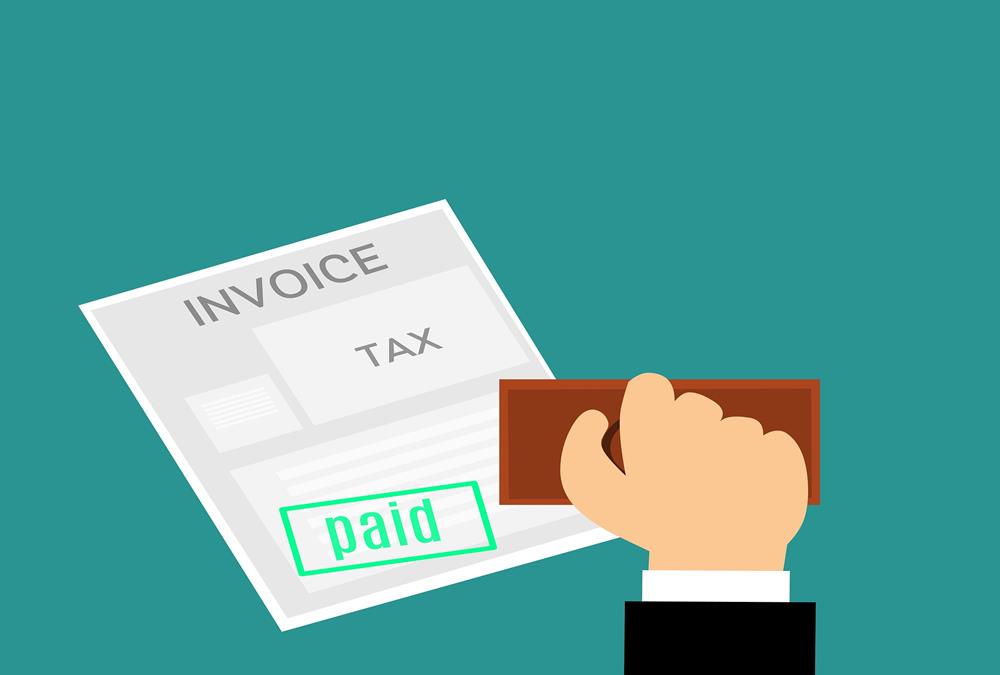- Home
- Business Processes
- Industry Knowledge
- Aerospace Industry
- Automotive Industry
- Banking Domain
- BFSI Industry
- Consumer/ FMCG Industry
- Chemicals Industry
- Engineering & Construction
- Energy Industry
- Education Domain
- Finance Domain
- Hospitality Domain
- Healthcare Industry
- Insurance Domain
- Retail Industry
- Travel and Tourism Domain
- Telecom Industry
- Leadership Skills
- eLearning
- Home
- Functional
- Order to Cash
- Accounts Receivable Documents
Accounts Receivable Documents
This article discusses the key documents generated during the order to cash process. Learn the documents that are created while processing AR transactions and business significance of each of these documents. This article is applicable to all ERP's and systems.
Given below are the documents generated during the I2C Process:
Purchase Order
A purchase order (PO) is a commercial document and first official offer issued by a buyer to a seller, indicating types, quantities, and agreed prices for products or services the seller will provide to the buyer. Sending a purchase order to a supplier constitutes a legal offer to buy products or services. Acceptance of a purchase order by a seller usually forms a contract between the buyer and seller, so no contract exists until the purchase order is accepted. It is used to control the purchasing of products and services from external suppliers. Creating a purchase order is typically the first step of the Purchase to pay process in an ERP system. In case of order to cash or accounts receivable process, a purchase order is received from the customer that triggers the entire invoice to cash process.
Customer Invoice
An invoice or bill is a commercial document issued by a seller to a buyer, indicating the products, quantities, and agreed prices for products or services the seller has provided the buyer. An invoice indicates the sale transaction only. Payment terms are independent of the invoice and are negotiated by the buyer and the seller. Payment terms are usually included on the invoice. From the point of view of a seller, an invoice is a sales invoice.
Performance Bank Guarantee
The seller issues a Performance Guarantee to ensure or give concrete commitment to the buyer through its bank. This method ensures the buyer the timely execution of an agreement to have the goods exported or delivered or services performed. In case the seller defaults on execution of the terms agreed upon, the Performance Bank Guarantee ensures the buyer the payment of the guarantee amount by the issuing bank. In case of large projects, buyers generally demand from seller to provide a performance guarantee to ensure that the conditions of their purchase order will be fulfilled.
Packing List
In Exports/Imports Packing list is also a commercial document. Packing list shows how the material was packed. It is an itemized list of articles usually included in each shipping package, giving the quantity, description, and weight of the contents. Prepared by the shipper and sent to the consignee for accurate tallying of the delivered goods. A shipping list, packing list, waybill, packing slip (also known as a bill of parcel, unpacking note, packaging slip, (delivery) docket, delivery list, manifest or customer receipt), is a shipping document that accompanies delivery packages, usually inside an attached shipping pouch or inside the package itself. It commonly includes an itemized detail of the package contents and does not include customer pricing. It serves to inform all parties, including transport agencies, government authorities, and customers, about the contents of the package. It helps them deal with the package accordingly.
Certificate of Origin
A Certificate of Origin (often abbreviated to C/O or COO) is a document used in international trade. It is a printed form, completed by the exporter or its agent and certified by an issuing body, attesting that the goods in a particular export shipment have been wholly produced, manufactured or processed in a particular country. The “origin” does not refer to the country where the goods were shipped from but to the country where they were made. The certificate of origin must be signed by the exporter, and, for many countries, also validated by a Chamber of Commerce, and in the case of certain destination countries by a consulate. Chambers of Commerce offer certificate of origin services, amongst other organizations. Companies may consult the Chamber Directory on the World Chambers Network, the official global portal of Chambers of Commerce dedicated to electronic international trade, to find their nearest chamber who may offer this service.
Certificate of Quality and Quantity / Pre Shipment Inspection
Pre-shipment inspection, also called pre-shipment inspection or PSI, is a part of supply chain management and an important and reliable quality control method for checking goods' quality while clients buy from the suppliers. After ordering a number of articles, the buyer lets a third party control the ordered goods before they are dispatched to him. Normally an independent inspection company is assigned with the task of the PSI, as it is in the interest of the buyer that somebody not connected with the deal in any way verifies the amount and quality. This way the buyer makes sure, he gets the goods he paid for. The process involves, checking the total amount of goods and packing, controlling the quality and/or consistency of goods, checking of all documentation, including test reports, packaging list, and verifying compliance with the standards of the destination country (e.g. ASME or CE mark). After the inspection, a certificate of quality and quantity is issued.
Certificate of Insurance
Certificate of insurance is a document issued by an insurance company. It certifies that an insurance policy has been bought, and shows an abstract of the most important provisions of the insurance contract. In marine insurance (where cargo is insured against a floating insurance policy), COI serves to assure the consignee that insurance is in effect for the goods in transit and a proper policy will follow. This is also called insurance certificate. This might be required from the buyer before the shipping of the goods take place.
Airway Bill
Air Waybill (AWB) or air consignment note refers to a receipt issued by an international airline for goods and an evidence of the contract of carriage. There are several purposes that can be served by an airway bill, but its main functions are Contract of Carriage; Evidence of Receipt of Goods; Freight Bill; Certificate of Insurance and aids Customs Declaration. International air waybills that contain consolidated cargo are called master air waybills (MAWB). MAWBs have additional papers called house air waybills (HAWB). Each HAWB contains information of each individual shipment (consignee, contents, etc.) within the consolidation. International AWBs that are not consolidated (only one shipment in one bill) are called simple AWBs. A house air waybill can also be created by a freight forwarder. When the shipment is booked, the airline issues a MAWB to the forwarder, who in turn issues his or her own house air waybill to the customer.
Bill of Lading
A bill of lading (sometimes abbreviated as B/L or BOL) is a document used in the transport of goods. It serves several purposes in domestic and international trade. A bill of lading is generated by a shipper, details a shipment of merchandise, gives title to the goods, and requires the carrier to deliver the merchandise to the appropriate party. Because the bill of lading represents title to the goods detailed upon it, it can be traded in much the same way as the goods may be, and even borrowed upon if desired. This is a very important and common document used in export and import trade globally and for letter of credit and Documentary Collection transactions, it is important to retain title to the goods until the transaction is complete. This means that the bill of lading remains a vital part of international trade.
Proof of Delivery
Proof of delivery is a method to establish the fact that the recipient received the contents sent by the sender. Proof of delivery becomes very important when legal and financial documents are to be exchanged between two parties. In the United States, DHL, UPS and FedEx as well as the US postal service (USPS) provide proof of delivery. Commercial fleet operators also need to be able to confirm proof of delivery of goods to their customers. Proof of delivery is generally used when different courier services are used to deliver the product to the customer.
Lorry Receipt /Truck Receipt
When a person deposits the goods with any transporter for the purpose of transport to a given destination, the transporter issues a lorry receipt (LR) or consignment note to the person depositing the goods. The original LR/consignment note is sent either by the person booking the goods to the consignee directly or through bank. The consignee can collect the goods from the transporter by presenting the LR/consignment note. As per trade parlance, the ‘lorry receipt’ or ‘consignment note’ is a ‘document of title’ and ownership of goods passes by delivery of the LR/consignment note.
Installation Report
Installation report is used to report the successful installation of any equipment, machinery or project at customer site. This report details the installation, training and support details of that particular machine/product. This reports generally contains information like machine/product details, serial number, date of installation, customer name etc. The report is primarily for the benefit of the person ordering the work and of persons subsequently involved in additional or remedial work, or further inspections.
Warranty Certificate
In contract law, a warranty has various meanings but generally means a guarantee or promise, which provides assurance by one party to the other party that facts or conditions are true or will happen. This factual guarantee may be enforced and it allows for a legal remedy if that promise is not true or followed. Warranties provided in the sale of goods (tangible products) vary according to jurisdiction, but commonly new goods are sold with implied warranty that the goods are as advertised. In the United States, various laws apply, including provisions in the Uniform Commercial Code, which provide for implied warranties. A certificate specifying the implied warranty is known as Warranty Certificate.
Related Links
You May Also Like
-
To stay competitive in today’s tough market, the location of your warehouse is vital. To grow retail business need to offer to customers faster and affordable shipping time, which is dependent on the warehousing location as the location of the warehouse affects the transit time to ship orders to customers.
-
After products have been received and passed a quality inspection, they need to be stored so that you can find them when you need them. This process is called putaway. The spot where you store a particular product is called a location. One section of a warehouse might have small locations for light items; another area may have large locations on the floor for heavy items.
-
Overview of Third-Party Logistics
Third-party logistics (abbreviated as 3PL, or TPL) is an organization's use of third-party businesses to outsource elements of its distribution, warehousing, and fulfillment services. A third-party logistics provider (3PL) is an asset-based or non-asset based company that manages one or more logistics processes or operations (typically, transportation or warehousing) for another company.
-
Types of Inventory Count Processes
While dealing with lots of inventory in a warehouse, lots of things can go wrong. Shipments may not have the right number of units in them, or they could get damaged somewhere along the supply chain. Discrepancies in the stock may arise as part of every inventory control, and need to be corrected immediately after the inventory control procedure has been finished.
-
What is a Warehouse & why companies need them?
All organizations hold stocks. In virtually every supply chain, gaps exist between when something is produced and when a customer is ready to buy or receive it. Stocks occur at any point in the supply chain where the flow of materials is interrupted. This implies that products need to be stored during this period of gap.
-
What is Invoice to Cash Process
In this article, we will explore the business process area known as; Invoice to Cash; Also known as I2C. Learning objectives for this lesson are: Meaning of Invoice to Cash Process; Sub Processes under Invoice to Cash; Process Flow for Invoice to Cash; Key Transactions Fields; Key Setups/Master Data Requirements.
-
Inventory is money, and hence businesses need to perform physical inventory counts periodically to make sure that their inventory records are accurate. The traditional approach to conducting inventory counts is to shut down a facility during a slow time of year to count everything, one item at a time. This process is slow, expensive, and (unfortunately) not very accurate.
-
Business Case of Multiple Warehouses
Adding extra warehouses to business provides many benefits such as reducing shipping costs, increasing storage capacity, and having warehouses for specific purposes to simplify overall warehouse management. Multiple warehouses allow you to organize your inventory in a way that helps your business be more effective.
-
When a customer wants a product that has been stored in the warehouse, the same need to be picked off the shelf (or off the floor) and get it ready for shipping. Depending on how big is the warehouse, picking can take a while. (Many distribution centers cover more than 1 million square feet.). Hence, warehouse order picking methods are an important aspect within any warehouse.
-
This article discusses the key documents that gets generated during the import/export process. These documents may apply to both invoice to cash as well as order to cash cycles. Also learn the major custom docments for India.
Explore Our Free Training Articles or
Sign Up to Start With Our eLearning Courses

About Us
Learning
© 2023 TechnoFunc, All Rights Reserved









